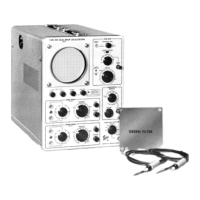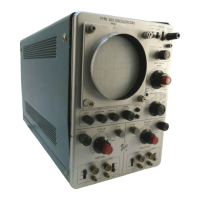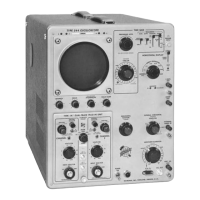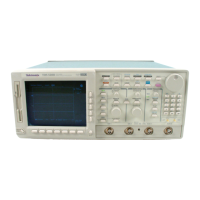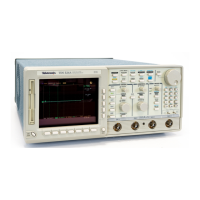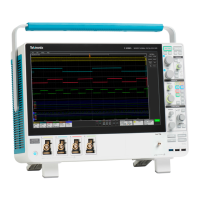Rackmounting—
51
03N
with hardware
provided
as
shown
in the left or center
illustration of
Fig.
3-1
A. Note
that the rear mounting
bracket can be
installed
either way so the slide-out tracks
will fit
a deep
or
shallow cabinet
rack.
Use Fig. 3-1A
as a
guide for mounting
the right
stationary section. Make sure
the
stationary sections
are horizontally aligned so they are
level and
parallel with
each other.
(b)
If the rear
rack rail
holes are tapped to accept
10-32
machine
screws,
mount the
left stationary section with
hardware
provided as
shown in the
left
or center
illustration
of
Fig.
6-1 B.
Note
that
the rear mounting
bracket
can
be
installed
either
way so the
slide-out tracks
will
fit a deep or
shallow cabinet
rack. Use
Fig.
6-1 B
as a
guide for mounting
the
right
stationary
section.
Make sure the
stationary
sec-
tions
are
horizontally
aligned so they are
level and parallel
with each other.
R5100
Installation
and
Adjustment
To
insert
the
instrument
into the
rack,
proceed
as
follows:
1.
Pull the
slide-out
track
intermediate sections
out to
the
fully
extended
position.
2.
Insert
the instrument chassis sections
into the inter-
mediate
sections.
3.
Press the stop latches
on the
chassis sections
and push
the instrument
toward the
rack until the latches snap
into
their holes.
4.
Again
press
the stop latches and
push the instrument
into the rack.
To
adjust
the slide-out tracks for
smooth sliding
action,
loosen the screws used
to join the stationary
sections to the
rails of the rack.
Center the instrument,
allowing the slide-
out tracks to seek the
proper width, then
tighten the
screws.
Maintenance
The slide-out tracks
require no lubrication.
The special
dark
gray finish on the sliding
parts is a permanent
lubri-
cation.
6-4

